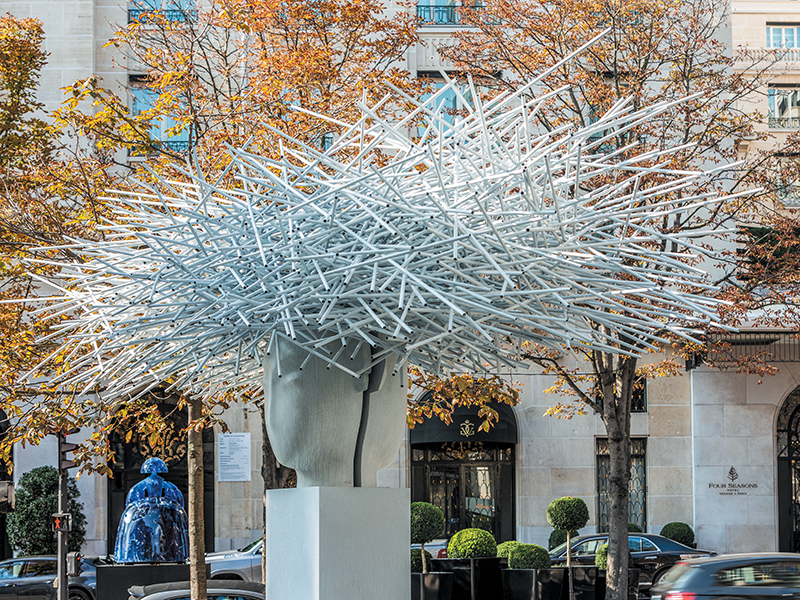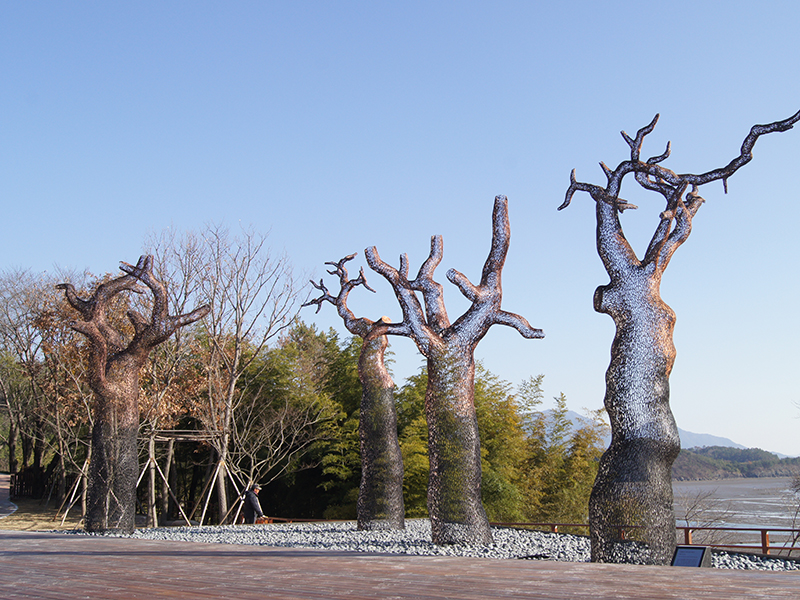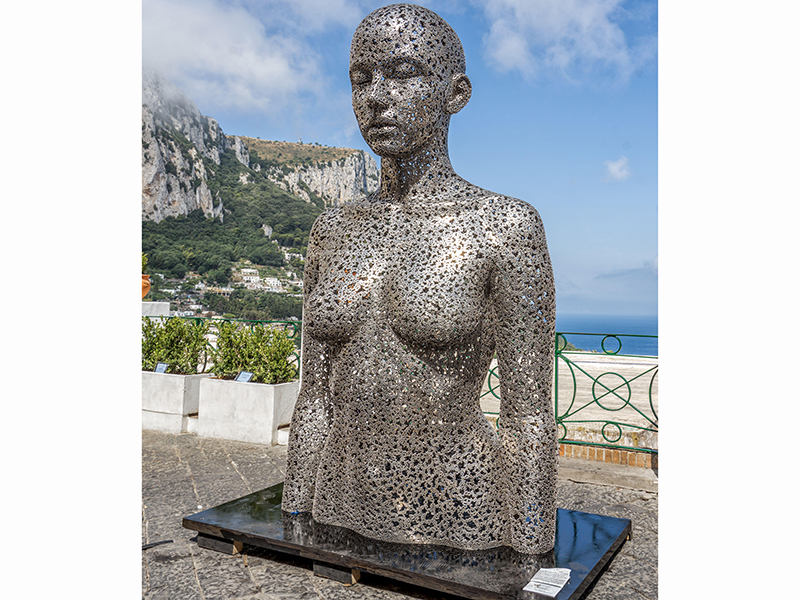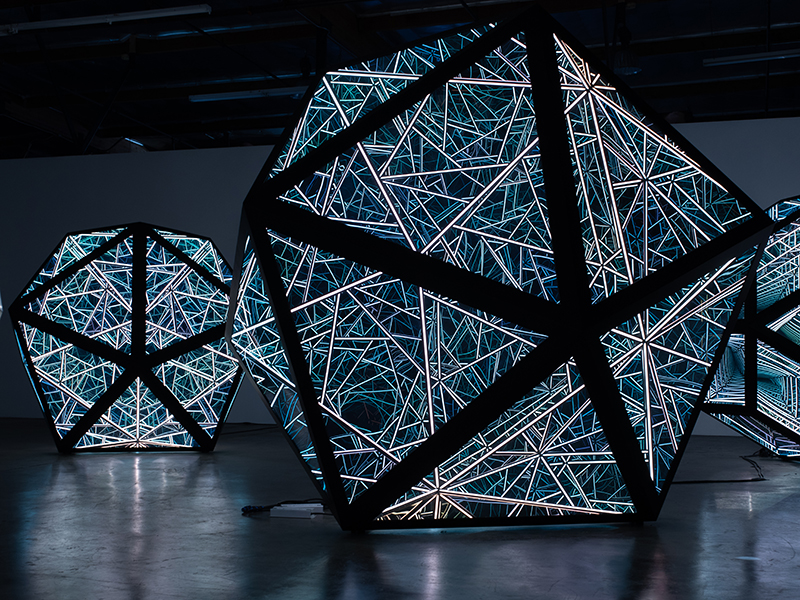
Beretta’s new service is dedicated to advising clients on how to enhance their private outdoor spaces. “People who noticed our public art have, since the pandemic, started making enquiries for their own gardens,” she explains. “Placing art in the garden really enhances a home by making it feel more personal and can transform an outdoor space into a little piece of paradise.”

Although she is based in London, Beretta and her team have been advising clients all over the world remotely on how to choose outdoor art. The conversation starts by establishing the basics: “Which artists do they like? What have they already acquired, and what is their budget for the outdoor work?”
Pictures of both house and garden are requested, along with architect contacts if the home is a new build in progress. “Then we prepare a proposal from our vast inventory and show works we have exhibited in public spaces that could be relevant.”
A site visit is essential to measure the garden and grounds and consider proportions, then visuals are prepared to show how each of the 10 to 20 suggested pieces would appear in the actual setting. “Operating in 26 cities across the world, we can always manage a visit even when there are travel restrictions,” explains Beretta. If a piece is selected from the shortlist, maintenance and lighting considerations are debated before the final choice is made and the sculpture installed and delivered.
Thinking of selecting your own outdoor art? Read on for Beretta’s tips on everything from placing a sculpture for best effect to commissioning a bespoke piece.

Positioning for Maximum Impact
“Do remember that less is more; don’t think that because you have a large garden you should have a piece in every corner,” Beretta advises. Instead, she recommends leaving enough space for a large sculpture to breathe—”you should be able to walk comfortably around it and be able to appreciate it in 360 degrees.”
She adds that it’s just as important to consider a sculpture’s ability to draw the eye to a focal point. “Identify the main landmarks in your garden, such as a pond, pool or slope. for example, place a sculpture made of highly reflective material near a water source to maximize effect and create unexpected reflections all over the garden. And, if placing more than one piece, start with the largest masterpiece first,” she recommends. When it comes to a figure, consider where its gaze will fall—it should meet the sightline of visitors entering and make eye contact.
Make the Most of Materials
Many metals react to climate, changing color as they rust or acquire a patina. If intended by the artist, this can enhance the beauty of a piece, but it’s worth considering whether the blue-green of weathered bronze and copper or the orange of rusted iron will work as well in the surrounding landscape as the original color of the piece.

“A risk assessment, evaluating the specifics of each project including the climate, is a pivotal part of our service,” says Beretta, who adds that materials can be treated to protect against unintended deterioration.
While monumental sculptures can be onerous to move because of their weight, Beretta points out that lightweight aluminum can be a good option as “very often sculptures do move with the owner, as they may be more valuable than the house.”
A sculpture made of highly reflective material can maximize the effect of a water source and create unexpected reflections all over the garden
Artists to Look Out For
Beretta names Anthony James among artists gaining ground with their outdoor art. “His works are particularly effective placed near a pool, waterfall, or other water sources,” she says of the sculptor whose geometric glass and steel structures gleam with embedded LED lights.

Opera Gallery also represents Manolo Valdés, a Spanish painter and sculptor known for his figurative and butterfly sculptures. Also watch out, she says, for Korean artists Lee Gil Rae, who takes nature as his muse, crafting organic tree forms from steel and copper pipes, and Seo Young Deok, who uses bicycle chains for his monumental portraits and figures.
Going Bespoke
“Commissioning a work of art is a delicate process, but can be a fulfilling experience if well planned,” says Beretta. While budget and size need to be communicated to the artist, she adds: “I advise never to request specific colors, shapes, or subject matter—leave that to the artist’s creativity; let them surprise you.
“Do make sure the weight is suitable, that the material is right for outdoors, and check accessibility to your garden and all other elements that could compromise installation. Finally, consider a suitable base for the work if needed, ask for maintenance instructions, and take advice on the best lighting system to enhance a sculpture and turn your outdoor space into a piece of art in itself.”





























